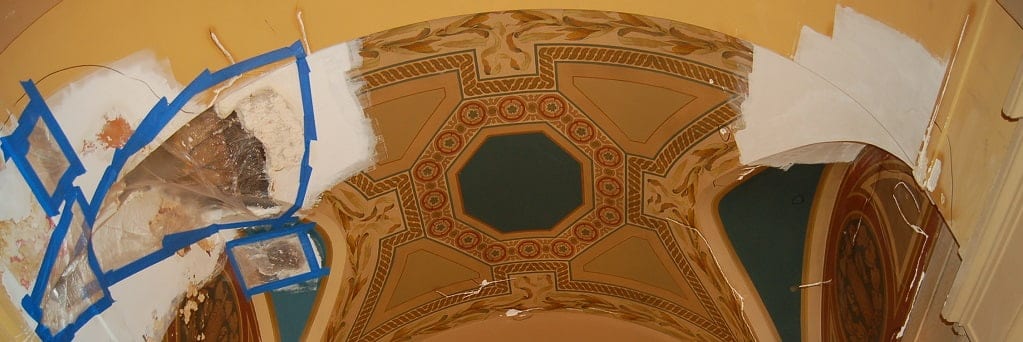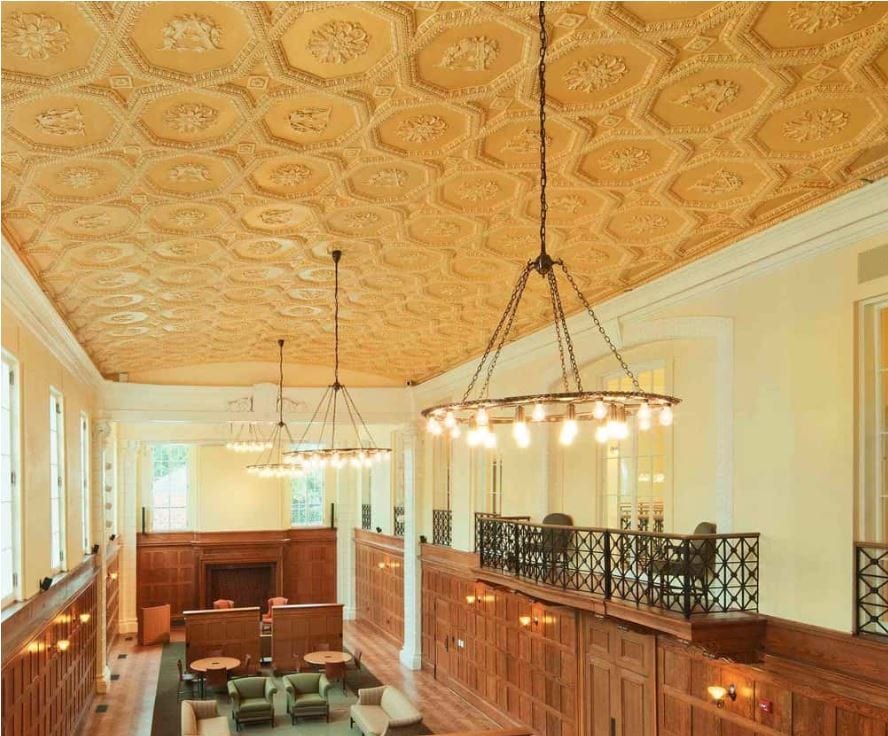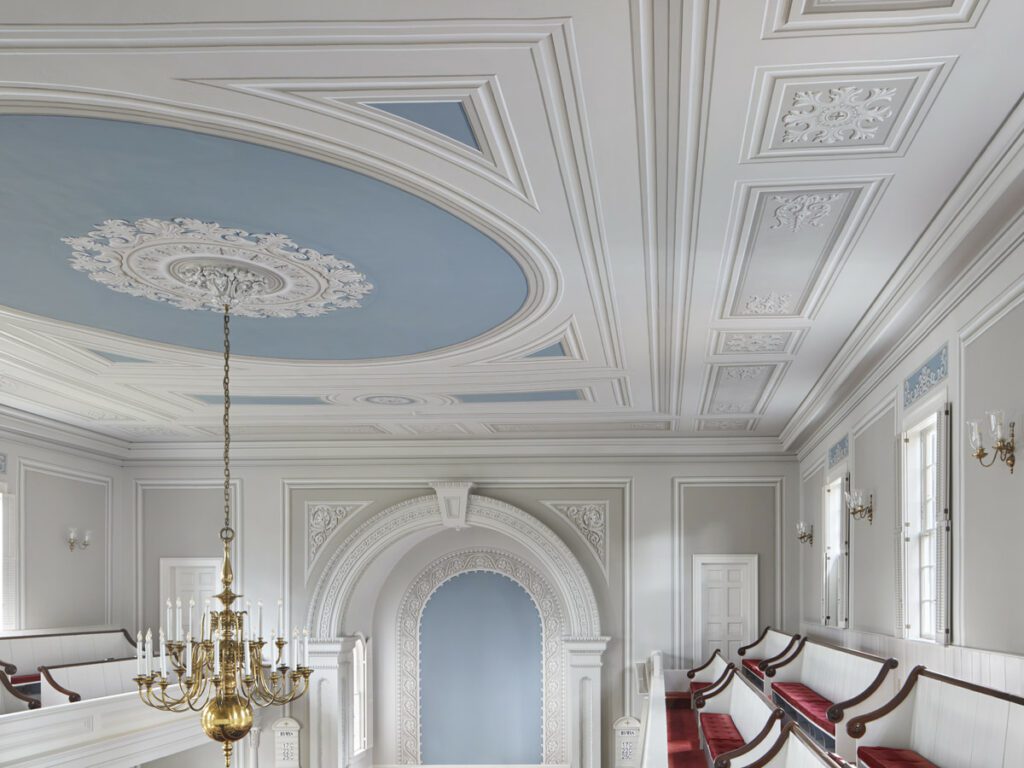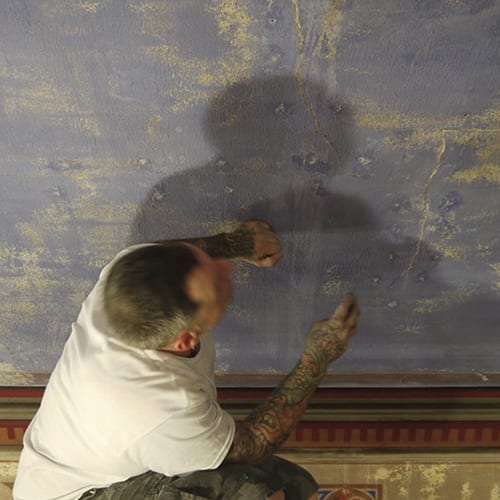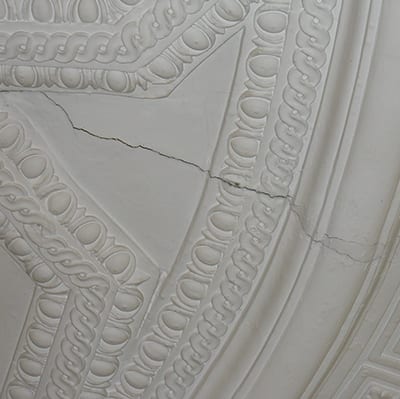Historic plaster is artwork worth restoring, conserving, and enjoying. As time progresses, materials fail and even the best workmanship will not be able to cope with the ravages of time. When assessing the condition of historic plaster there are several condition factors and workmanship factors to review in order to determine the best course of action.
Common conditional factors resulting in damage, degradation of surfaces, and plaster system failure:
Structural:
As years turn to decades and decades to centuries it should come as no surprise that structural problems will increase with age. Often, these problems arise from the little things—like nails. Iron and alloy nails common in historic structures can weaken, disintegrate, rust, or loosen with time. As this happens, the lath holding the plaster to the core structure of a building will pull away, causing the load to increase across the surface of the plaster structure. When assessing bowing, it is important to weigh all options. Processes like HPCS are highly effective and are ideal for plaster surfaces that are ornately decorated or intricately painted. The resin fills the expanse and re-binds the plaster, substrate and structure into one cohesive unit. Traditional methods might require part of the plaster to be removed or screws to be drilled through richly finished surfaces, damaging the effect.
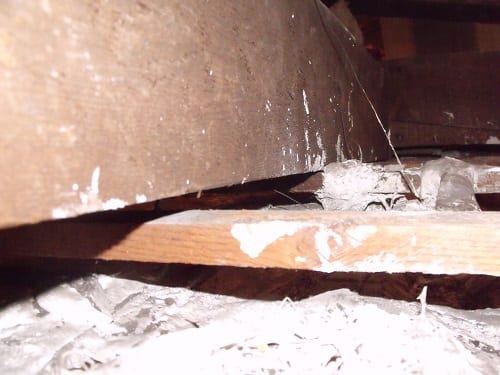
Separation of Wood Lath
Moisture permutation:
It goes without saying that plaster and moisture do not mix. However, there are several kinds of moisture damage. Catastrophic water damage is caused when large amounts of water come into contact with a plaster surface—often this is the result of rainwater, pipe explosions, or overflows. In this case, most of the plaster will have to be removed and when assessing the damage, plaster patterns and ornamentation should be adequately documented to ensure craftsman are able to reproduce it. Internal/slow water damage is the result of a leaking pipe within a wall, small drips from a crack in the roof, or water seeping in from a poorly caulked window. Overtime, these small leaks will result in big damage and can cause plaster to detach from the substrate it was originally applied to. This increases the load across the entire plaster surface. When assessing cases of overloading, the region should be thoroughly assessed to ensure the damage is not the result of (or partially stemming from) water damage.
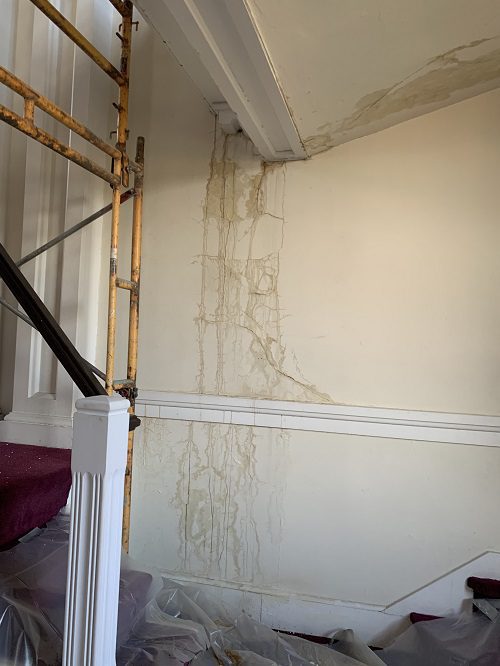
Water Damage
Overloading:
Especially common around doorways, on ceilings, in corners, or across a large expanse of wall space, overloading is a leading cause of cracks in historic buildings. While this can be the result of poor workmanship, it is most likely caused by heavy objects, the building settling, or an imbalance within the core structure of a building. Moving furniture is a simple fix, but often situations are far more complicated than that. When assessing the condition of the plaster the load displacement of the building should be determined, locations of heavy objects (statuary or furniture) should be noted, and the direction of cracking should be documented. Additionally, if the cracks have grown over time, it is important to document where they started, when they started relative to changes made within the structure, and the direction(s) in which the cracks grew.
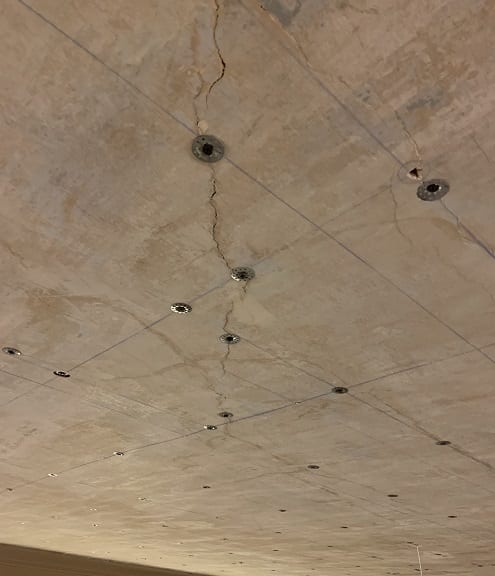
Cracks in Plaster
Use/Traffic:
High-touchpoint surfaces and their immediate surroundings commonly show signs of excessive wear-and-tear. Often, being careful, attentive, or deliberate with use in these areas is not an option, thus it is important to make sure any repairs account for the level of use. When assessing these areas note if the damage is just resulting from use such as chips, scrapes, dents, or dings or if the damage is a combination of workmanship which is unsuitable for the setting and/or defective. Often an expert will need to be consulted to make that determination.
Common workmanship factors resulting in damage, degradation of surfaces, and plaster system failure:
Improper Curing:
Patience is a virtue and allotting adequate time for plaster to dry is very, very important. If the curing process is rushed, the damage is done and usually cannot be repaired. When assessing this kind of plaster, the scope and size of characteristic bubbling is important to note. It might be possible to smooth the surface over, but usually it will have to be completely replaced.
Poor Workmanship:
Poor plaster mixture, thick application, and bad plaster practices will result in many different kinds of damage appearing on the surface of finished plaster. Not all of these abnormalities are bad, structurally deficient, or will result in more damage down the road. Historic plaster serves as an art rather than a science, abnormalities can be equated to “character” or “individuality”.
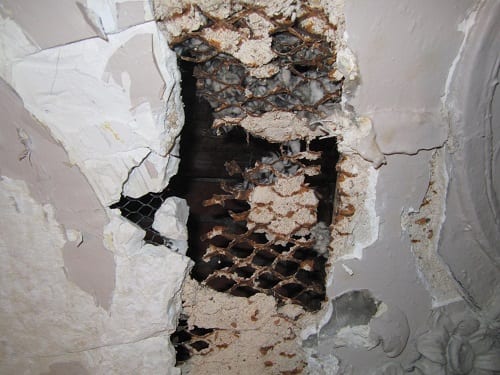
Historic Plaster in need of repair at the Cosmos Club in DC
When assessing historic plaster, there is an important distinction to be made between flat plaster and ornamental plaster. While both ultimately will succumb to the same forces, ornamental plaster requires careful documentation of the designs, spacing, scale, and location in order to allow it to be recreated.

